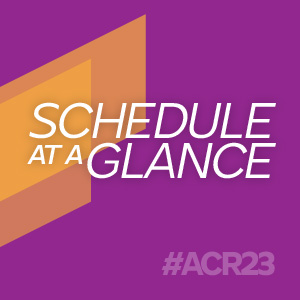Abstract Session
Vasculitis
Session: Abstracts: Vasculitis – Non-ANCA-Associated & Related Disorders III: Innovation (2599–2604)
2602: Spatially Resolved Cellular Signatures Predict Corticosteroid Treatment Response in Giant Cell Arteritis
Wednesday, November 15, 2023
11:45 AM - 11:55 AM PT
Location: Room 33A-C
- CA
Cecilia Ansalone, PhD, MSc
University of Glasgow
Glasgow, United KingdomDisclosure information not submitted.
Presenting Author(s)
Cecilia Ansalone1, Sam McAllister2, Ethan Pickerill3, Lin Zhang3, Annie Peacock2, Dominic McGovern4, Holly Leslie5, Victoria Kellior2, Evelyn Qian2, David Gemperline3, Aysin Tulunay Virlan2, Sylvia Wright6, Paul Cauchi6, Timothy Beckman6, Lisa Hutton6, John Cole1, Isabella Wulur3, Robert Benschop3, Nigel Jamieson5, Carl Goodyear1 and Neil Basu1, 1University of Glasgow, Glasgow, United Kingdom, 2University of Glasgow - School of Infection & Immunity, Glasgow, United Kingdom, 3Eli Lilly and Company, Indianapolis, IN, 4University of Glasgow - School of Medicine, Glasgow, United Kingdom, 5University of Glasgow - School of Cancer Sciences, Glasgow, United Kingdom, 6NHS Greater Glasgow and Clyde, Glasgow, United Kingdom
Background/Purpose: Corticosteroids (CS) remain the mainstay of giant cell arteritis (GCA) therapy. Between ~30-70% patients relapse following CS taper and are consequently at risk of high toxicity due to prolonged CS exposure. Predictors of CS treatment response would enable a stratified approach to management but have yet to be established. Existing mechanistic GCA research has mostly focussed upon a putative role for CD4+ T cells in treatment non-response, however, GCA is characterised by a more expansive immune landscape. This study is the first to comprehensively characterise the spatial immunobiology of GCA and associate this with CS treatment response.
Methods: Archival formalin-fixed paraffin-embedded (FFPE) GCA temporal artery biopsies (TAB) from patients who fulfilled ACR GCA criteria were linked to their clinical record and sub-grouped according to those who fulfilled the EULAR definition for sustained remission (SR) at 1 year (n=6) and those who did not (non-response; NR, n=6). Non-GCA TAB (n=4) were included as controls. Tissue sections were analysed for the whole transcriptome atlas on the Nanostring GeoMx Digital Spatial Profiler. Specific topographic areas of interest (AOI) were defined by immunofluorescence in the adventitia, media, and intima layers within which CD45+ (leukocytes), CD68+ (macrophages and giant cells; Mφ and GCs), CD31+ (endothelial cells), and CD45-CD68-CD31- (stroma). Several bioinformatic tools were used to determine transcriptomic differences, including GeoMx NGS pipeline, DESeq2 package, Searchlight2 software, Gene Set Enrichment Analysis (GSEA), and CIBERSORT. The results informed a 28-plex antibody panel for spatial phenotypic cell analysis, which was applied to sections sourced from corresponding TABs using a PhenoCycler System (CODEX).
Results: Spatial transcriptomic analysis identified 2,275 differentially expressed genes between GCA and controls. The most significantly upregulated genes were immunoglobulin genes and genes associated with pathological Mφ. GCA SR cases had greater CD45+ and CD68+ infiltrates towards the intima layer than NR cases. Differential expression signature analysis showed fundamental differences among CD68+ adventitial/media Mφ, intima Mφ, and GCs. Deconvolution analysis indicated a mix of monocyte, M1 and M2 Mφ in the adventitial transcriptomic signature, while a mainly M0 undifferentiated phenotype was observed in intima Mφ and GCs. Notably, SR cases expressed an increased plasma cell molecular signature when compared to NR cases, both in adventitial CD45+ AOI and stroma. In contrast, NR adventitial CD45+ AOI demonstrated a pronounced CD4+ T cell signature associated with INFγ response and other inflammatory pathways, including TNF and IL-6 signalling. CODEX imaging analysis revealed clear and abundant CD138+CD38+ plasma cells in the adventitia layer, which were visible in 6/6 of SR cases and only 1/5 of NR case.
Conclusion: Spatial analysis of GCA TAB tissue collected at diagnosis revealed strong plasma cell and pathological Mφ signatures that correlated with CS treatment response at 1 year. In contrast, CS treatment non-response was characterised by a CD4+ T cell signature.
C. Ansalone: None; S. McAllister: None; E. Pickerill: Eli Lilly, 3, 11; L. Zhang: Eli Lilly, 3; A. Peacock: None; D. McGovern: None; H. Leslie: None; V. Kellior: None; E. Qian: None; D. Gemperline: Eli Lilly, 3, 11; A. Virlan: None; S. Wright: None; P. Cauchi: None; T. Beckman: None; L. Hutton: None; J. Cole: None; I. Wulur: Eli Lilly, 3, 11; R. Benschop: Eli Lilly, 3; N. Jamieson: Galvani, 1; C. Goodyear: Abbvie, 6, AstraZeneca, 2, 5, Bristol-Myers Squibb(BMS), 2, 5, Celgene, 5, Eli Lilly, 5, Galvani, 2, 5, GlaxoSmithKlein(GSK), 5, Istesso, 5, Janssen, 5, MedAnnex, 2, 5, Medincell, 2, MiroBio, 5, Revolo, 5, UCB, 5, 6; N. Basu: AbbVie/Abbott, 2, 6, Eli Lilly, 2, 5, 6, Galapagos, 2, 5, GlaxoSmithKlein(GSK), 2, 5, Pfizer, 5, Roche, 6, Vifor, 2, 5, 6.
Background/Purpose: Corticosteroids (CS) remain the mainstay of giant cell arteritis (GCA) therapy. Between ~30-70% patients relapse following CS taper and are consequently at risk of high toxicity due to prolonged CS exposure. Predictors of CS treatment response would enable a stratified approach to management but have yet to be established. Existing mechanistic GCA research has mostly focussed upon a putative role for CD4+ T cells in treatment non-response, however, GCA is characterised by a more expansive immune landscape. This study is the first to comprehensively characterise the spatial immunobiology of GCA and associate this with CS treatment response.
Methods: Archival formalin-fixed paraffin-embedded (FFPE) GCA temporal artery biopsies (TAB) from patients who fulfilled ACR GCA criteria were linked to their clinical record and sub-grouped according to those who fulfilled the EULAR definition for sustained remission (SR) at 1 year (n=6) and those who did not (non-response; NR, n=6). Non-GCA TAB (n=4) were included as controls. Tissue sections were analysed for the whole transcriptome atlas on the Nanostring GeoMx Digital Spatial Profiler. Specific topographic areas of interest (AOI) were defined by immunofluorescence in the adventitia, media, and intima layers within which CD45+ (leukocytes), CD68+ (macrophages and giant cells; Mφ and GCs), CD31+ (endothelial cells), and CD45-CD68-CD31- (stroma). Several bioinformatic tools were used to determine transcriptomic differences, including GeoMx NGS pipeline, DESeq2 package, Searchlight2 software, Gene Set Enrichment Analysis (GSEA), and CIBERSORT. The results informed a 28-plex antibody panel for spatial phenotypic cell analysis, which was applied to sections sourced from corresponding TABs using a PhenoCycler System (CODEX).
Results: Spatial transcriptomic analysis identified 2,275 differentially expressed genes between GCA and controls. The most significantly upregulated genes were immunoglobulin genes and genes associated with pathological Mφ. GCA SR cases had greater CD45+ and CD68+ infiltrates towards the intima layer than NR cases. Differential expression signature analysis showed fundamental differences among CD68+ adventitial/media Mφ, intima Mφ, and GCs. Deconvolution analysis indicated a mix of monocyte, M1 and M2 Mφ in the adventitial transcriptomic signature, while a mainly M0 undifferentiated phenotype was observed in intima Mφ and GCs. Notably, SR cases expressed an increased plasma cell molecular signature when compared to NR cases, both in adventitial CD45+ AOI and stroma. In contrast, NR adventitial CD45+ AOI demonstrated a pronounced CD4+ T cell signature associated with INFγ response and other inflammatory pathways, including TNF and IL-6 signalling. CODEX imaging analysis revealed clear and abundant CD138+CD38+ plasma cells in the adventitia layer, which were visible in 6/6 of SR cases and only 1/5 of NR case.
Conclusion: Spatial analysis of GCA TAB tissue collected at diagnosis revealed strong plasma cell and pathological Mφ signatures that correlated with CS treatment response at 1 year. In contrast, CS treatment non-response was characterised by a CD4+ T cell signature.
C. Ansalone: None; S. McAllister: None; E. Pickerill: Eli Lilly, 3, 11; L. Zhang: Eli Lilly, 3; A. Peacock: None; D. McGovern: None; H. Leslie: None; V. Kellior: None; E. Qian: None; D. Gemperline: Eli Lilly, 3, 11; A. Virlan: None; S. Wright: None; P. Cauchi: None; T. Beckman: None; L. Hutton: None; J. Cole: None; I. Wulur: Eli Lilly, 3, 11; R. Benschop: Eli Lilly, 3; N. Jamieson: Galvani, 1; C. Goodyear: Abbvie, 6, AstraZeneca, 2, 5, Bristol-Myers Squibb(BMS), 2, 5, Celgene, 5, Eli Lilly, 5, Galvani, 2, 5, GlaxoSmithKlein(GSK), 5, Istesso, 5, Janssen, 5, MedAnnex, 2, 5, Medincell, 2, MiroBio, 5, Revolo, 5, UCB, 5, 6; N. Basu: AbbVie/Abbott, 2, 6, Eli Lilly, 2, 5, 6, Galapagos, 2, 5, GlaxoSmithKlein(GSK), 2, 5, Pfizer, 5, Roche, 6, Vifor, 2, 5, 6.



